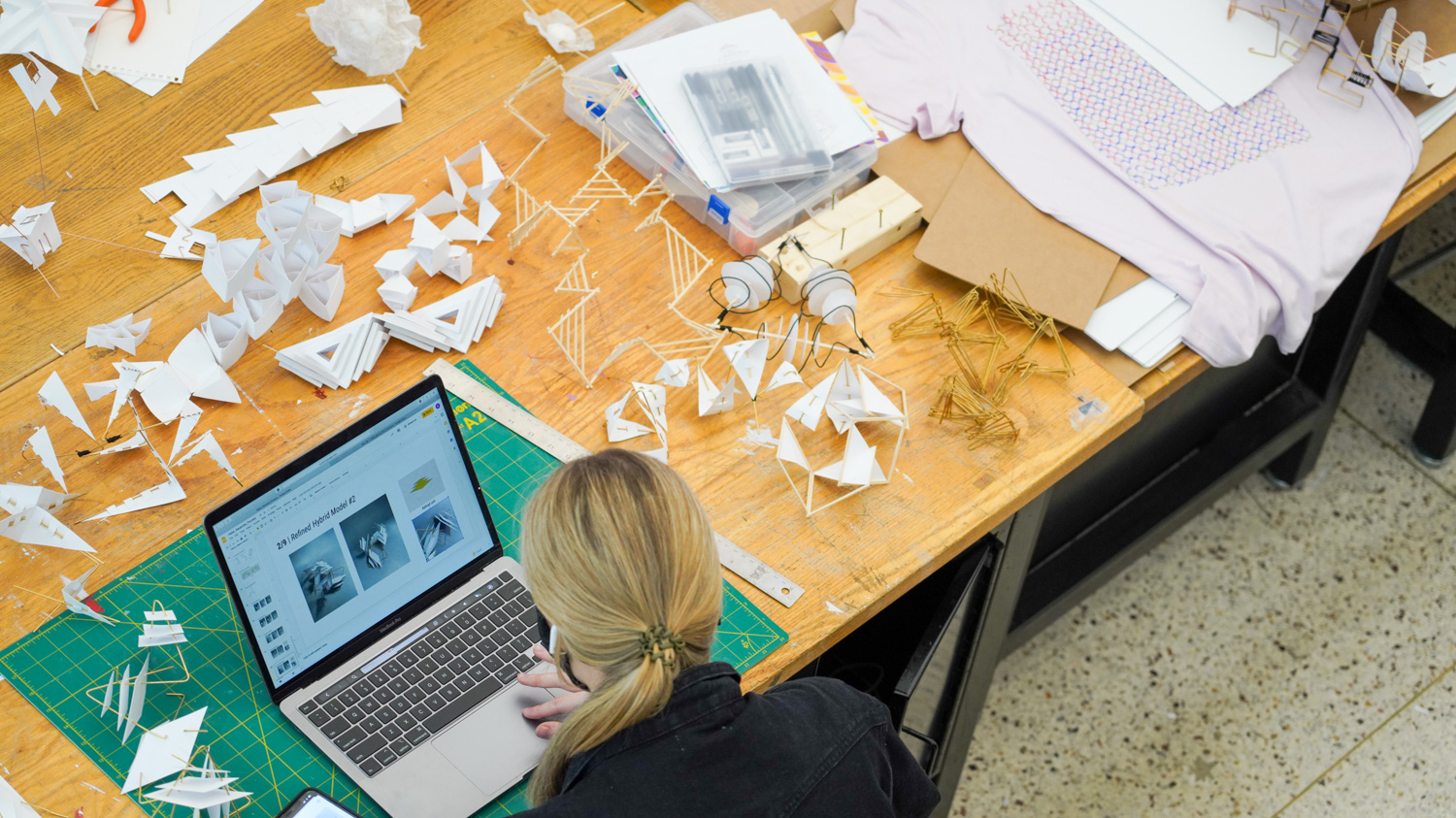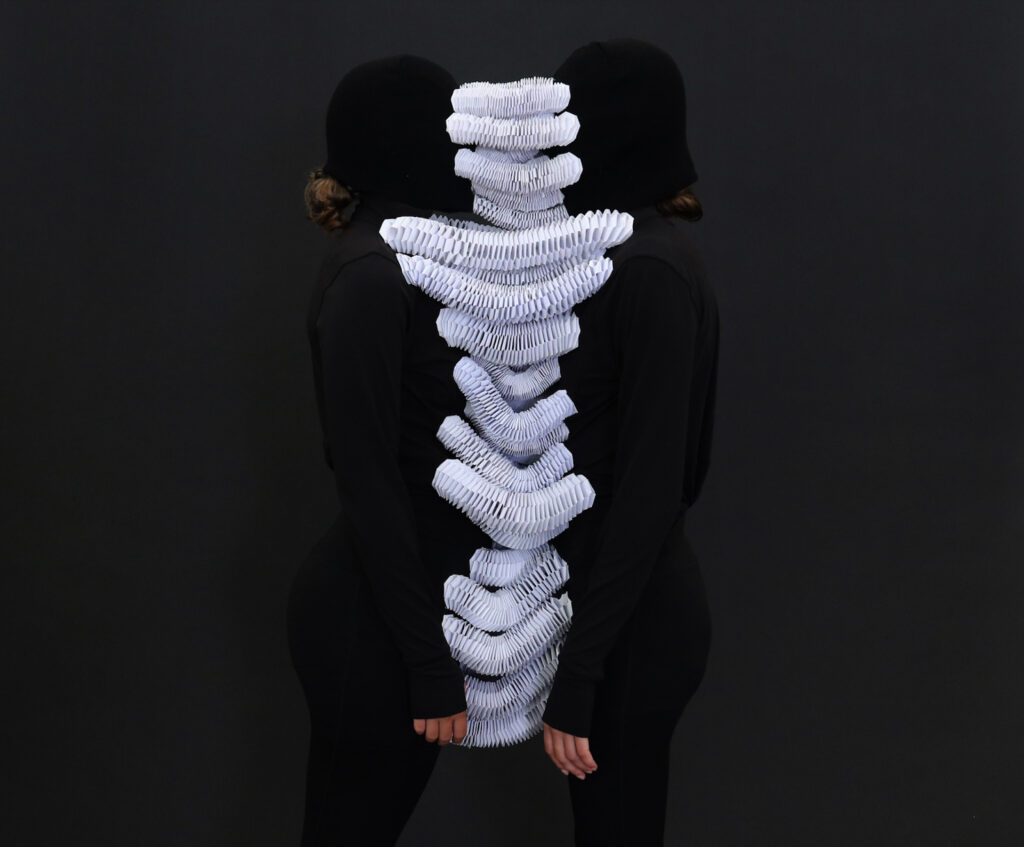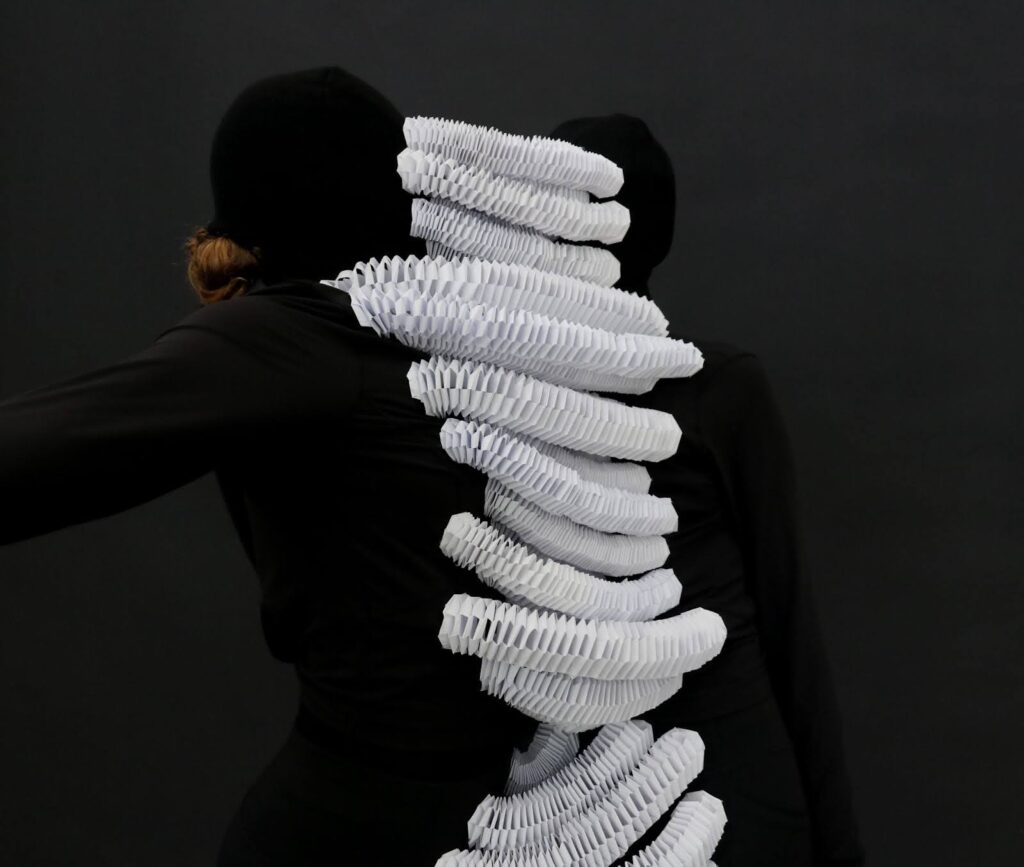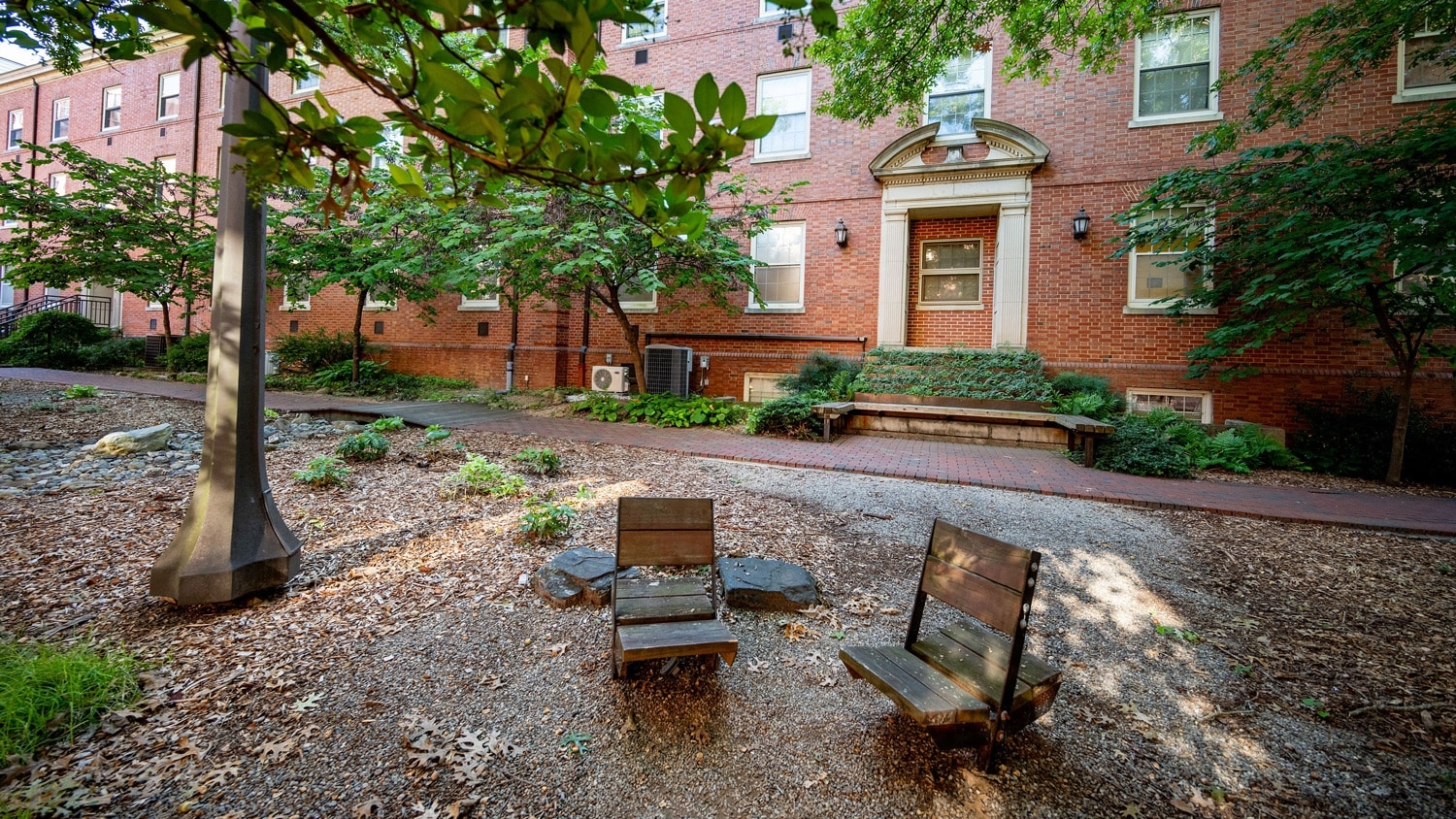Designing a Path Through Mental Health: Wellness in the First Year Experience

Following several major grants awarded to the College of Design by the NC State University Foundation, the First Year Experience has blossomed into a program that integrates wellness and mental health awareness into an interdisciplinary design curriculum. The First Year Experience is led by program director Sara Queen, an associate professor of architecture in the college.
“The First Year Experience is not just about learning content, but also learning radically new ways to think and work,” Queen said. The College of Design is a very close-knit community, and most of the first year involves practicing intellectual risk-taking through studio-based learning. The wellness-informed curriculum was created because the freshman experience in design bridges the vast threshold or transition between high school and college where students are expected to routinely fail and subsequently grow through trial and error.
After COVID-19, Queen and others noticed a disparity in students entering the program compared to their pre-pandemic counterparts. She observed that students coming into college were already at their capacity of risk-taking and stress, and lacked the social skills necessary to engage in collaboration. She likens this phenomenon to Maslow’s Hierarchy, arguing that it is impossible to get into a creative flow, take risks, or successfully recover from failure if one’s most basic needs are not being met. If a student is already feeling overwhelmed, they cannot productively engage with the transformative curriculum and develop new modes of thinking.
So, Queen decided to shift the program, bringing in Allison Grubbs, an alumnus and practicing clinical social worker, to integrate mental health and emotional literacy – which she describes as “understanding and feeling emotions from the bottom-up” – to deepen students’ connections with each other, and with themselves.
By combining instruction on polyvagal theory – how your nervous system affects emotion, social connection and fear – with a focus on identifying how previous experiences can help students approach current problems, Grubbs hopes to give the students a more holistic perspective of themselves and their bodies and learn more compassionate, human-centered design approaches. “A lot of these skills that we’re talking about help someone be a better person and a better designer. It’s going to be helpful all the way around– professionally and personally,” Grubbs said.
Grubbs, who taught a module in D100: Design Inquiry, gave students the opportunity to engage in honest self-evaluation, allowing them to see that their work is valuable even if imperfect, and to get excited about what they have achieved and how they will improve. “It’s important to help students realize that fully retreating when they are at capacity will end up making them feel worse- sometimes it’s better to accomplish something, even if it’s small. The goal is to improve life skills linked to how we feel about ourselves, how we work and how we perceive our work,” Grubbs said.
“The goal is to improve life skills linked to how we feel about ourselves, how we work and how we perceive our work”
The First Year Experience changes included weekly personal reflections and extracurricular nights which included activities like cooking, yoga, games, and screenprinting. Reflections throughout the program were more than a simple well-check: prompts pushed students to uncover their core values and better understand themselves. Grubbs and Emily Burdo, College of Design Embedded Counselor, also supplemented the program with a volunteer psychoeducational group that was more clinical and communal in nature for students who needed additional support.
Queen deliberately focused the curriculum to focus on peer-to-peer collaboration, helping students regain social skills lost during the pandemic. The paper project, a foundational assignment in the First Year Experience, required students to create a wearable or inhabitable structure that examines how we relate to one another.
Nimet Betül Karataş, a current second-year student in media arts, design and technology, experienced these changes firsthand. She was worried about feeling disconnected from other students after she changed her major and joined the College of Design. Through the First Year Experience, group projects pushed her to develop relationships with her peers and learn how to work collaboratively as an entire studio.
“Because my partner [Lina Pettaris] and I were physically connected for our paper project, it felt like a shared experience. It was more fun that way, and felt like a community rather than a competition,” Karataş said.


Integrating mental health and emotional literacy into the program has contributed to its success. It doesn’t feel like an extra thing that students have to worry about – it’s simply a part of their curriculum.
Emily Burdo, the embedded counselor for the College of Design, says the emotional literacy and wellness education built into this year’s First Year Experience has made a huge difference in the program. “I’m so happy that the students have gotten the opportunity to learn about not only self-compassion and resilience, but also the physiological stuff, like how your brain and body actually work,” Burdo said.
Students in the program have the option to obtain the skills that they need to be self-introspective and manage their lives, but may also become open to taking next steps for additional counseling or support.
Karataş said she felt the wellness-based curriculum strengthened the skills she had already gained through therapy, and combined with flexible professors, the studio and program setup allowed students to truly enjoy the process while maintaining self-care. She hopes professors can use the versatility of the studio and instructors to accommodate all kinds of students in the future.
Queen echoed this sentiment, saying she hopes to implement accommodations that address the specific needs of design students. Criteria through the DRO doesn’t fully address students who have anxiety, ADHD, and other conditions, and the accommodations that are given, like extra time on tests, are rarely applicable to studio learning. She wants the First Year Experience to create inclusive learning environments for all design students which might include accommodations such as allowing students to wear noise-canceling headphones while working in a large, loud room, follow a different schedule that gives them time to work during their days off, and other adjustments that support students to work at their full potential.
The tolls of the pandemic also affected instructors in the College of Design who, due to the long hours spent in the studio, know their students more intimately than most. Moving forward, Burdo hopes to offer training for staff and faculty to help them better support themselves and their students.
Queen says that students are now excited to be back, and want to be part of a community in a way that they didn’t before. She hopes to gain a greater ability as a society to articulate wicked problems, seeing something from new angles to work through it.
“I hope, at the end of the day, that we can reconcile the rigor of design education with the demands of design education: finding a balanced rate of working hard and replenishing, discovering new ways of immersion without overwhelm, and questioning hard structures without room for exploration,” Queen said.
This post was originally published in College of Design Blog.


